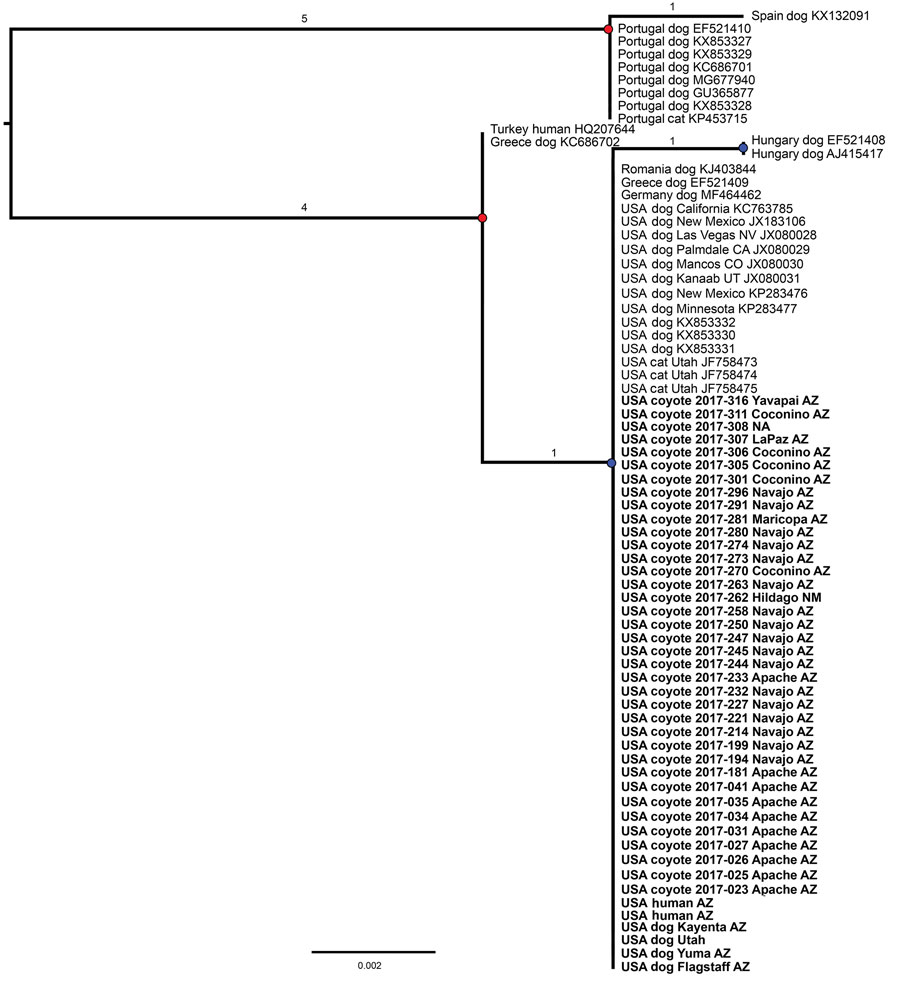Volume 26, Number 12—December 2020
Dispatch
Coyotes as Reservoirs for Onchocerca lupi, United States, 2015–2018
Figure 2

Figure 2. Rooted maximum-likelihood phylogenetic tree based on the cytochrome oxidase c gene sequence from 73 Onchocerca lupi nematode samples, including 43 newly obtained samples from 37 coyotes, 4 dogs, and 2 humans, southwestern United States, 2015–2018. This analysis covers 432 bases. Branch lengths indicate the number of single-nucleotide polymorphisms; red dots indicate bootstrap values >99; blue dots indicate bootstrap values <65. Countries of collection, host species, and year of collection are indicated. Newly sequenced specimens are in bold. Scale bar indicates number of nucleotide substitutions per site.
Page created: July 13, 2020
Page updated: November 19, 2020
Page reviewed: November 19, 2020
The conclusions, findings, and opinions expressed by authors contributing to this journal do not necessarily reflect the official position of the U.S. Department of Health and Human Services, the Public Health Service, the Centers for Disease Control and Prevention, or the authors' affiliated institutions. Use of trade names is for identification only and does not imply endorsement by any of the groups named above.